Here are some events that happened on May 21st. It could be an event or a person that died or was born on that day
1471 Born: Albrecht Dürer, German painter, engraver, and mathematician (d. 1528)
Albrecht Dürer (21 May 1471 – 6 April 1528), sometimes spelt in English as Durer or Duerer, without umlaut, was a German painter, printmaker, and theorist of the German Renaissance. Born in Nuremberg, Dürer established his reputation and influence across Europe when he was in his twenties due to his high-quality woodcut prints. He was in communication with the major Italian artists of his time, including Raphael, Giovanni Bellini and Leonardo da Vinci, and from 1512 he was patronized by Emperor Maximilian I. Dürer is commemorated by both the Lutheran and Episcopal Churches.
Dürer's vast body of work includes engravings, his preferred technique in his later prints, altarpieces, portraits and self-portraits, watercolours and books. The woodcuts, such as the Apocalypse series (1498), are more Gothic than the rest of his work. His well-known engravings include the Knight, Death and the Devil (1513), Saint Jerome in his Study (1514) and Melencolia I (1514), which has been the subject of extensive analysis and interpretation. His watercolours also mark him as one of the first European landscape artists, while his ambitious woodcuts revolutionized the potential of that medium.
Dürer's introduction of classical motifs into Northern art, through his knowledge of Italian artists and German humanists, has secured his reputation as one of the most important figures of the Northern Renaissance. This is reinforced by his theoretical treatises, which involve principles of mathematics, perspective, and ideal proportions.
Albrecht Dürer has been credited with inventing the basic principle of ray tracing, a technique used in modern computer graphics.
German stamps depicting Dürer or his works
1647 Died: Pieter Corneliszoon Hooft, Dutch poet and playwright (b. 1581)
Pieter Corneliszoon Hooft (16 March 1581 in Amsterdam – 21 May 1647 in The Hague) - Knight in the Order of Saint Michael - was a Dutch historian, poet and playwright who lived during the Dutch Golden Age.
Pieter Corneliszoon Hooft, often abbreviated to P.C. Hooft, was born in Amsterdam as the son of the then mayor, Cornelis Hooft. Hooft was also uncle to Cornelis and Andries de Graeff.
In 1598, in preparation for his career as a merchant, his father sent him to France and Italy, but Pieter Corneliszoon Hooft was more interested in art and was deeply impressed by the Italian renaissance.
Hooft was a prolific writer of plays, poems and letters, but from 1618 onwards he concentrated on writing a history of the Netherlands (Nederduytsche Historiën), inspired by Roman historian Tacitus. His focus was primarily on the Eighty Years' War between the Netherlands and Spain and though he tried to be as impartial as possible, he did succeed.
As a poet, he was influenced by his Renaissance contemporaries in France and Italy.
1686 Died: Otto von Guericke, German physicist and inventor of the Magdeburg Hemispheres (b. 1602)
Otto von Guericke (November 20, 1602 – May 11, 1686 [Julian calendar]; November 30, 1602 – May 21, 1686 [Gregorian calendar]) was a German scientist, inventor, and politician. His major scientific achievements were the establishment of the physics of vacuums, the discovery of an experimental method for clearly demonstrating electrostatic repulsion, and his advocacy for the reality of "action at a distance" and of "absolute space".
He was also a very spiritual man in the Dionysiac tradition, as were many scientists of the Enlightenment, and connected the vacuum of space to an infinite divinity. Von Guericke described this duality "as something that ‘contains all things’ and is ‘more precious than gold...more joyous that the perception of bountiful light’ and ‘comparable to the heavens’."
German stamp depicting Otto von Guerick
1703 – Daniel Defoe is imprisoned on charges of seditious libel
Daniel Defoe (born Daniel Foe; c. 1660 – 24 April 1731) was an English trader, writer, journalist, pamphleteer and spy. He is most famous for his novel Robinson Crusoe, published in 1719, which is claimed to be second only to the Bible in its number of translations. He has been seen as one of the earliest proponents of the English novel, and helped to popularize the form in Britain with others such as Aphra Behn and Samuel Richardson. Defoe wrote many political tracts and was often in trouble with the authorities, and spent a period in prison. Intellectuals and political leaders paid attention to his fresh ideas and sometimes consulted with him.
Defoe was a prolific and versatile writer, producing more than three hundred works—books, pamphlets, and journals—on diverse topics, including politics, crime, religion, marriage, psychology, and the supernatural. He was also a pioneer of business journalism and economic journalism.
Stamps issued by Monaco and Romania depicting Daniel Defoe
Stamp issued by Guinea Bissau depicting Albert Gobat
1844 Born: Henri Rousseau, French painter (d. 1910)
Henri Julien Félix Rousseau (21 May 1844 – 2 September 1910) was a French post-impressionist painter in the Naïve or Primitive manner. He was also known as Le Douanier (the customs officer), a humorous description of his occupation as a toll and tax collector. He started painting seriously in his early forties; by age 49, he retired from his job to work on his art full-time.
Ridiculed during his lifetime by critics, he came to be recognized as a self-taught genius whose works are of high artistic quality.[5][6] Rousseau's work exerted an extensive influence on several generations of avant-garde artists
At his funeral, seven friends stood at his grave: the painters Paul Signac and Manuel Ortiz de Zárate, the artist couple Robert Delaunay and Sonia Terk, the sculptor Brâncuși, Rousseau's landlord Armand Queval, and Guillaume Apollinaire who wrote the epitaph Brâncuși put on the tombstone:
We salute you Gentle Rousseau you can hear us.
Delaunay, his wife, Monsieur Queval and myself.
Let our luggage pass duty free through the gates of heaven.
We will bring you brushes paints and canvas.
That you may spend your sacred leisure in the
light and Truth of Painting.
As you once did my portrait facing the stars, lion and the gypsy.
Stamps and a First Day Cover from France and Czechoslovakia depicting Henri Rousseau's paintings
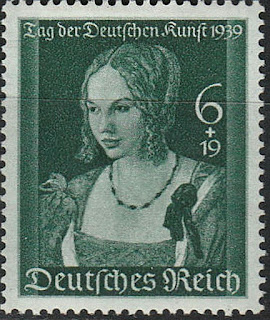
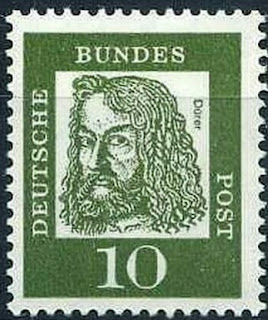
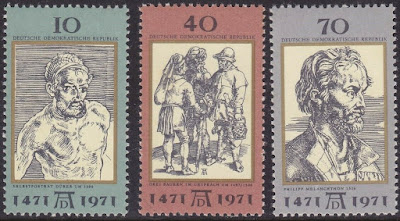







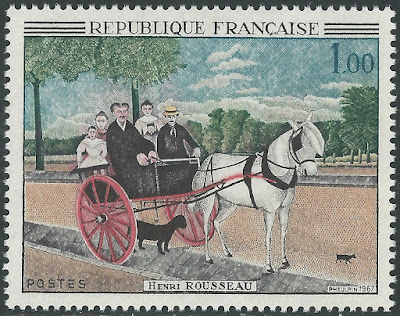
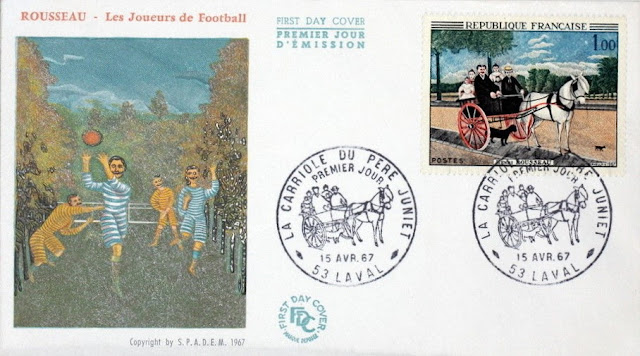
No comments:
Post a Comment